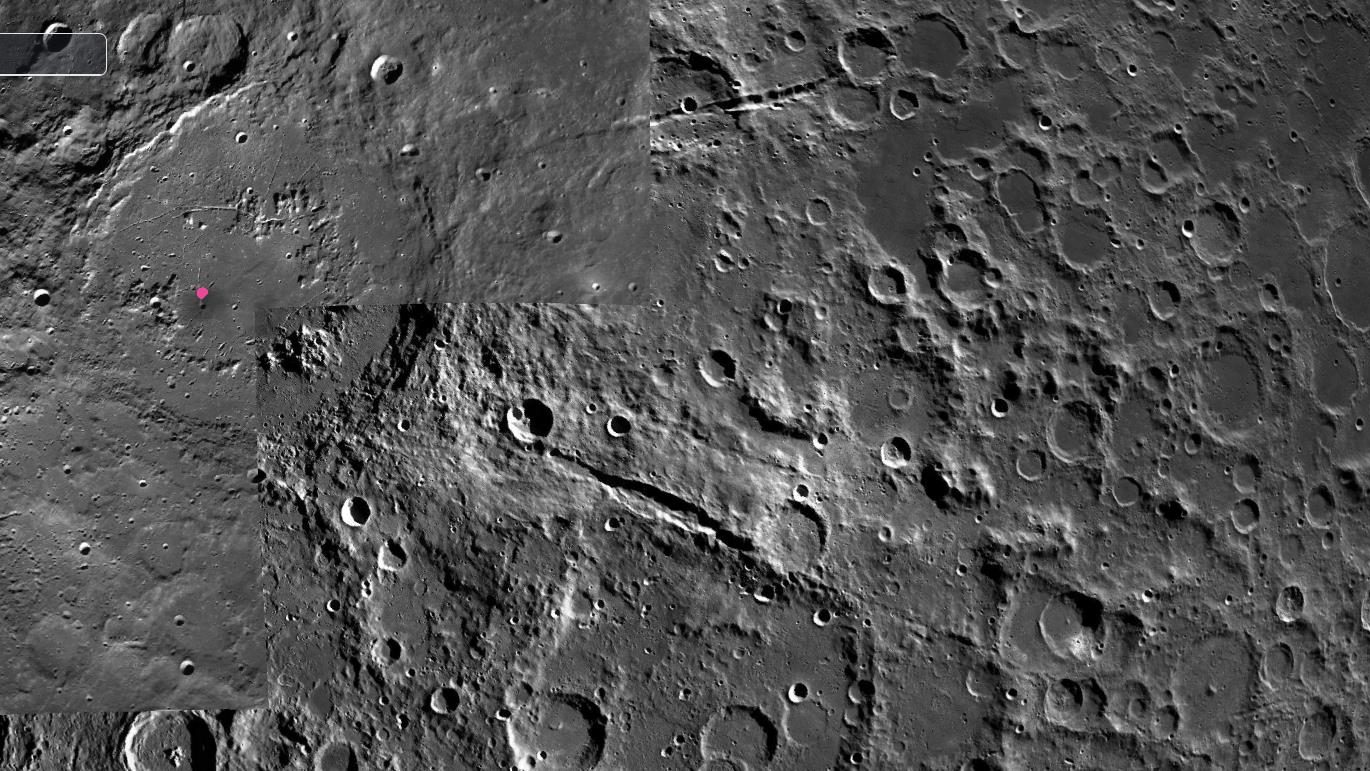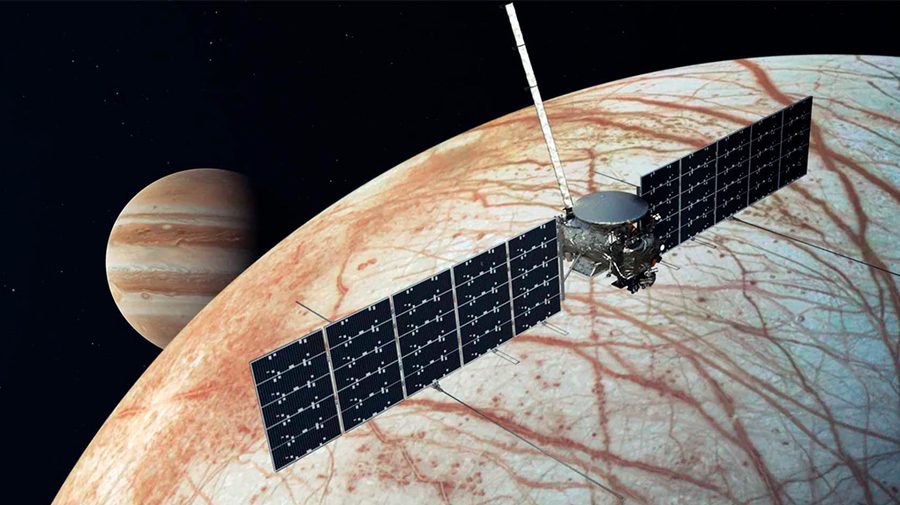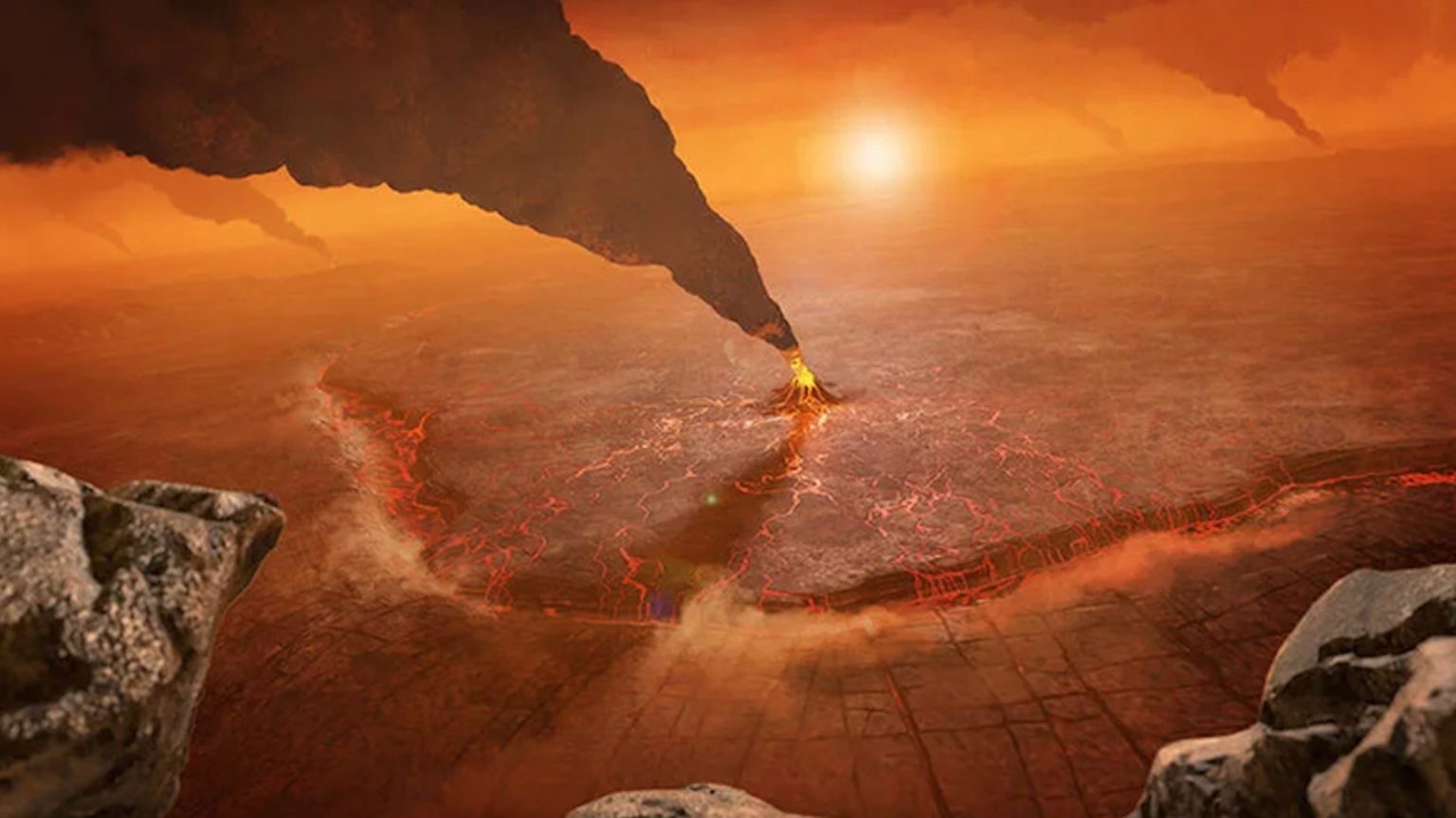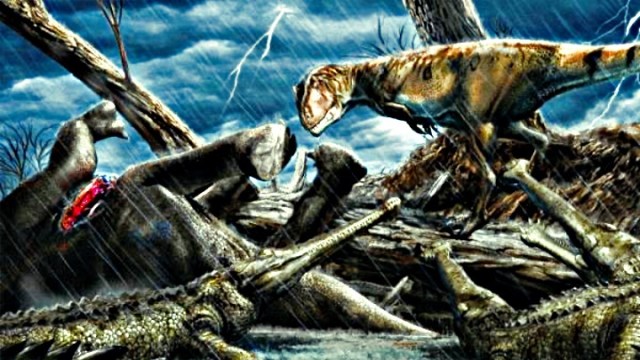New lunar map should help U.S. return to Moon
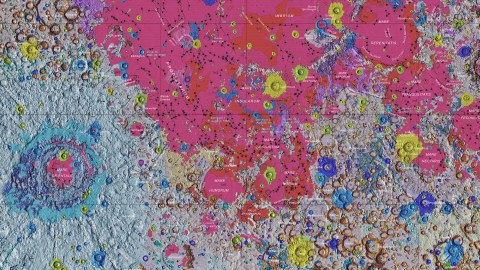
Image: USGS, public domain
- Combining old maps with new data, the USGS has produced a definitive blueprint of the lunar surface.
- The new map will help scientists and astronauts find their way around the Moon.
- NASA’s aim is to land the first woman on the Moon as early as 2024.
Future missions
Why is everybody so eager to get to Mars when the Moon is right next door? Perhaps Musk et al. are attracted by the planet’s redness. Red is danger, excitement, life. By comparison, Earth’s natural satellite exudes an uninvitingly pale glow.
This map will change all that. It shows the lunar surface as a riot of colors, its hemispheres two sizzling pizzas of varied and appetizing composure. There’s something here for everybody’s taste. Who wouldn’t want a bite out of this?
Forgive the hyperbole, but whetting the appetite certainly was the intent with this ‘Unified Geologic Map of the Moon’. For not only is it the first complete and uniform map of lunar surface geology, it’s also an important planning instrument for future manned missions to the Moon.
The map was created by the U.S. Geological Survey‘s Astrogeology Science Center in Flagstaff, Arizona. In collaboration with NASA and the Lunar and Planetary Institute, it combined six ‘regional’ maps of the Moon made during the Apollo era (1961-1975) with input from more recent unmanned lunar missions.
This included data on the polar regions from NASA’s Lunar Orbiter Laser Altimeter (LOLA) and close-ups of the equatorial zone from the Japanese Space Agency‘s recent SELENE mission.

The near (left) and far side of the Moon.
Image: NASA/GSFC/USGS – public domain
Definitive blueprint
The result: a single, high-resolution map of the entire lunar surface, at a scale of 1:5,000,000 – the definitive blueprint of the Moon’s surface geology.
Of course, the surface of the Moon is not as brightly colored as these maps – according to the dozen eyewitness accounts we have, the lunar terrain is light grey in the highlands and dark grey in the ‘maria’ (the so-called seas), and gives the overall impression of a world made out of asphalt.
The colors on the map refer to different types of surface features, grouped together according to their age:
- Brown features are ‘pre-Nectarian’: from the Moon’s origin 4.5 billion years ago, to 3.92 billion years ago.
- Orange and tan are ‘Nectarian’ features: 3.92 to 3.85 billion years old.
- Purple, blue and pink are for ‘Imbrian’ features: 3.85 to 3.16 billion years old.
- Green is for ‘Eratosthenian’: 3.16 to 1.1 billion years old.
- Yellow for ‘Copernican’: from 1.1 billion years ago to the present.
The various shades of each color refer to different feature types, such as craters, plateaus, basins, ‘maria’, plains, massifs, and domes. The detailed map also names a lot of features on the surface, and pinpoints the locations of previous landings – manned and unmanned.
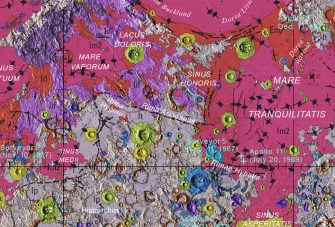
Excerpt of the new Moon map, showing the Apollo 11 landing site (below right).
Image: USGS, public domain
Artemis 2024
This excellent map will help plan America’s next excursion to the Moon. NASA’s Artemis program aims to land ‘the first woman and the next man’ on the Moon by 2024.
Ultimately, Artemis should lay the groundwork for continuous, sustainable habitation on the Moon; and help prepare the next giant leap for humanity… yes, to Mars.
Before our attention drifts off towards the Red Planet again, here are 10 things you may not have known about the Moon, just to keep you interested.
- The Moon is drifting away from Earth at a rate of 3.78 cm (1.48 in) per year, about the same speed as our fingernails grow.
- The Moon – and especially the full Moon – was once considered a cause of neurological and psychiatric conditions, hence the term ‘lunatic‘, which literally means ‘moonstruck’.
- The Moon determines when it’s Easter: the first Sunday after the first Saturday after the first full Moon after the spring equinox (20-22 March).
- In the 1950s, the U.S. considered detonating a nuke on the Moon. ‘Project A119‘ was meant to project strength at a time when the Americans were behind the Soviets in the space race.
- Seismographs on the lunar surface have measured ‘moonquakes’, small movements several miles below the surface, caused by the gravitational pull of the Earth.
- The land speed record on the Moon is 10.56 miles per hour, set by a lunar rover.
- The space suit worn by the Apollo astronauts weighed 180 pounds on Earth, but only 30 pounds on the Moon, due to reduced lunar gravity.
- Gene Cernan was the last of the 12 men who have walked on the Moon, so far. His final words on the lunar surface, on 14 December 1972, were: “As I take man’s last step from the surface, back home for some time to come (but we believe not too long into the future), I’d like to just say what I believe history will record: That America’s challenge of today has forged man’s destiny of tomorrow. And, as we leave the Moon at Taurus-Littrow, we leave as we came and, God willing, as we shall return: with peace and hope for all mankind.”
- A 1988 survey by the Lowell Observatory found that 13 percent of Americans believe that the Moon is at least partially made of cheese.
- The Moon is a one-person graveyard. Celebrated astro-geologist Eugene Shoemaker wanted to be an astronaut but was disqualified for medical reasons. Instead, he trained Apollo astronauts for their lunar missions. After his death in 1997, his ashes were placed on board NASA’s Lunar Prospector, which was crashed onto the Moon in 1999. Shoemaker remains the only human buried on another world.
For more on the Unified Geologic Map of the Moon and to download it in its entirety, go here at the Astrogeology Science Center of the USGS.
Strange Maps #1024
Got a strange map? Let me know at strangemaps@gmail.com.

